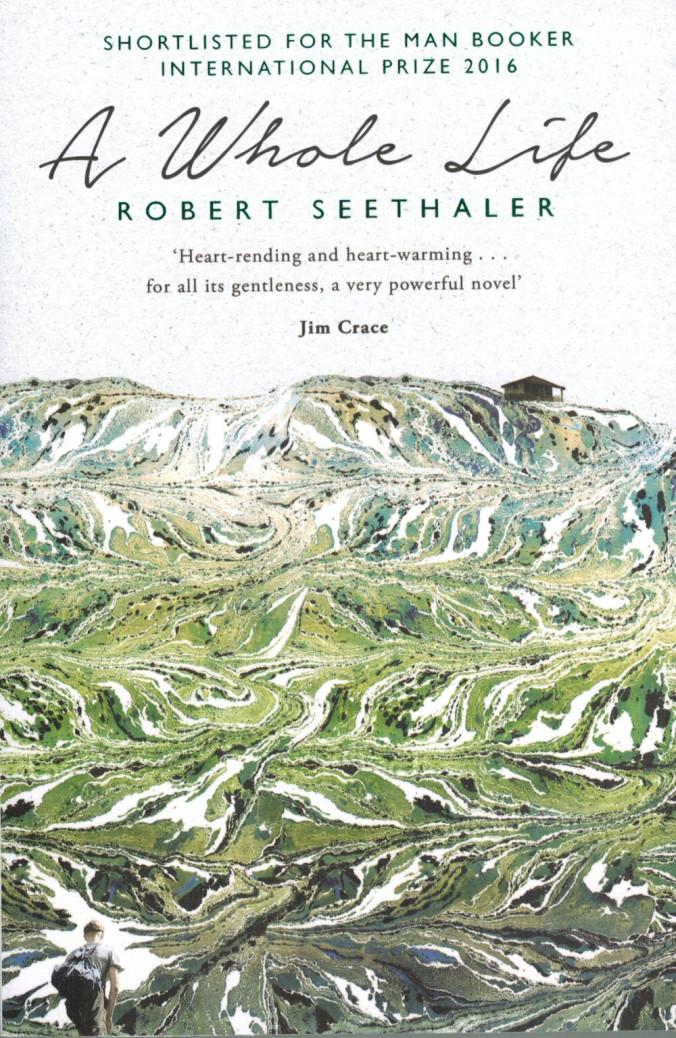
“Every life, when you look back on it, reduces itself to a few moments. The moments are what stay with us.” – Robert Seethaler
Andreas Egger’s life may seem small to the passing observer, fitting neatly within A Whole Life, a slim 160-paged novella. (Just compare this to Hanya Yanagihara’s A Little Life, which was a sprawling 720-pages. Although, I haven’t read that one yet!) But do not be fooled, it takes quite a bit of skill for Viennese-born author Robert Seethaler to distill Egger’s life into a few defining moments: dropping a bowl of cereal one morning, being draped over a cow saddle to be spanked by an unloving uncle, building a small fence along the edge of his property. These small moments culminate into a beautifully observed life. There are some important big moments too, but I don’t want to spoil the book for you.
What struck me the most about this book is that the setting almost doesn’t matter. When World War II begins, Eggers leaves his village in the Austrian Alps to enlist in the army. Not because he feels patriotic or passionate, but because it is what everyone else is doing. It didn’t even occur to me that Eggers would be fighting for the Nazis until Seethaler writes, “He… was relieved when he soon saw the familiar red of the swastikas glimmering towards him.” (“Humane Nazis” seem to be popping up in my reading a lot this year, something I’m still wrestling with, and I’ll be telling you about Kurt Vonnegut’s Mother Night soon.)
As I read A Whole Life, I was immediately reminded of Denis Johnson’s Train Dreams, a connection, as I later found out, a lot of people have made. They are both novellas, both containing some surreally beautiful moments – an entire mountain lit up in candles for a wedding proposal, a pack of wolves running and howling in the middle of the night with a little wolf girl. I wouldn’t say these are anything like magical realism, but instead, the writers have a way with creating images that haunt you long after you’ve finished reading. The setting and time period for both books could easily be swapped and you wouldn’t even notice – one is cutting trees to make room for a transcontinental railroad while the other is cutting trees to make room for alpine cable cars. Nazi or American Patriot, the writers have both created very realistic and human portraits of a lifetime within 160+ pages.
***
I would recommend this book to you if you liked Per Petterson’s Out Stealing Horses, William Maxwell’s So Long, See You Tomorrow, or Denis Johnson’s Train Dreams. I see a similar line of style, plot, and technique running through all of these books. Have you read these before? Do you agree?
Advertisements Share this:




